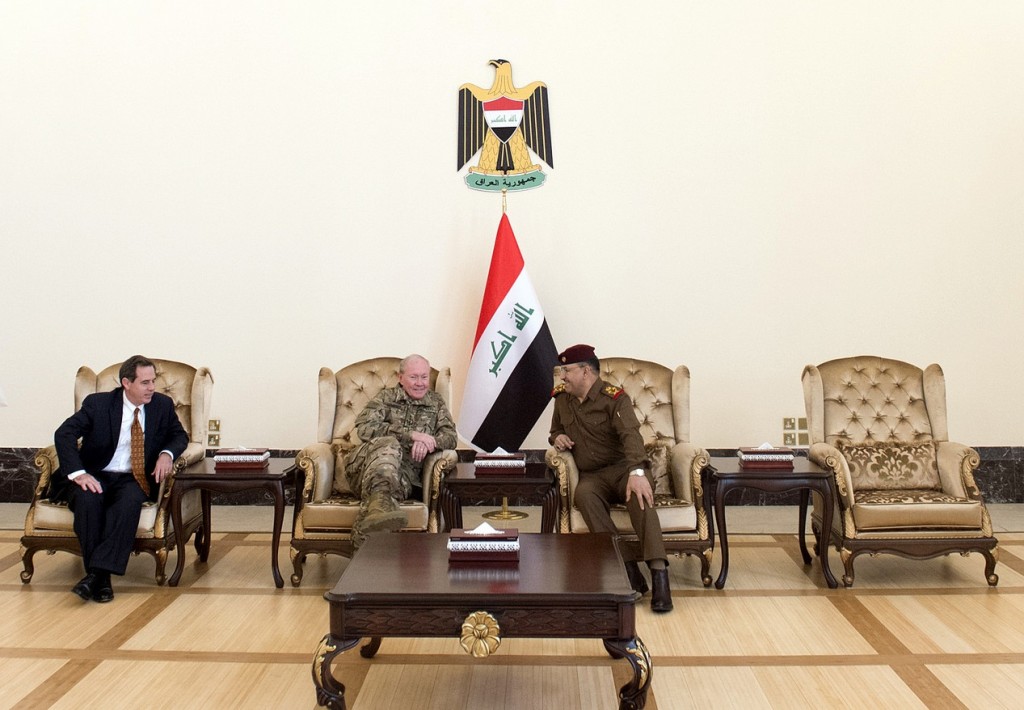
In this week’s post, we cover intelligence leaks, supersonic engines, the contentious LRS-B funding plan, gaps in close air support capability, and the most powerful rocket booster ever built.
Last week, Chinese state media reported two men have been jailed for selling intelligence on the PLA(N) aircraft carrier Liaoning to foreign spies. Chinese counterintelligence officials noted young Chinese internet users were being recruited by foreign spies to gather military intelligence. In the same week, Chinese media confirmed the construction of China’s second aircraft carrier (a companion of Liaoning). Admiral Liu (a former political commissar of the PLAN) didn’t provide an in-service date but he noted that the existing carrier, Liaoning, will need more practice, fighter jets, trained pilots and mature technology before undertaking missions into the far seas.
Moving to airpower and its role in future challenges, General Frank Goren, the USAF Europe Commander, affirmed that while we can’t predict future challenges, we can predict that air power will be part of the solution. He was speaking directly to the challenges of Ebola, Crimea and Afghanistan, noting the air force is often the first to respond. For example, the US F-15 arrived in Lithuania 14 hours after the Crimean crisis began.
The use of airpower against the IS in Iraq and Syria remains topical. The Chairman of the Joint Chiefs of Staff, General Martin Dempsey called for ‘strategic patience’ in escalating the air war, arguing expansion of air strikes could ‘risk civilian casualties and play into the hands’ of the IS propaganda machine. Australia is taking a steady approach, maintaining its presence by recently replacing its six F/A-18F Super Hornets with six F/A-18A Hornets in the Middle East.
America’s Long Range Strike Bomber’s again in the headlines, although this time, the debate has centred on spending. The assistant secretary for acquisition, William LaPlante announced that the LRS-B service will ‘most likely’ use a cost-plus approach, rather than a fixed-price agreement. LaPlante emphasised the risk of assigning fixed-price contracts for high-tech developments. Despite his reasoning, critics have argued the cost-plus approach undermines all previous assurances of a $550 million cap and lower than normal technology costs. Loren Thomson, a consultant for the Boeing–Lockheed Martin team, suggests the (FY2010) $550 million cap can be maintained, given it excludes RDT&E costs ($260 million) and inflation adjustments. Despite the debate, the fixed-price condition hasn’t mattered historically, with governments paying overrun costs. (These discussions won’t surprise Andrew Davies—see his thoughts on LRS-B costs here, here and here.)
Defence acquisition costs have also entered the domestic debate. Ken Drover from the Defence Global Centre of Excellence at KPMG International called for Australia to adopt new cost-effective acquisition models that make more use of the private sector. Drover noted foreign defence departments were abandoning the traditional model of purchase and through-life ownership for a pay-by-the-use model. Instead, countries can lease capabilities, as seen with the British Voyager air-to-air refuelling capability. Hungary and the Czech Republic even lease their Saab Gripen fast jet capability.
Also, on next-generation technology, talks are beginning for a list of technologies needed to ensure US air superiority in 2030. The sixth-generation fighter and a ‘family of systems’ approach are expected to dominate the discussion. Another important part of future American capabilities is counter-A2/AD. The US has begun developing long range standoff (LRSO) missiles. Last month, the USAF announced that it’ll consider a supersonic engine among three propulsion options under review. Although slated as a stealthy cruise missile, it has never been specified as a supersonic engine (flying speed between Mach 1.0 and 5.0).
But the future of air power isn’t all strategic long-range strike. A week-long summit discussing the future of Close Air Support for American forces (air-ground fire coordination) identified gaps in training and future equipment. First, pilots were found to have limited training and operation experience in ‘contested environments’. Second, there exists a shortage in low-cost aircraft flying CAS weapons in less contested environments. This becomes particularly pronounced with the F-35 variants taking on the main CAS weapons operations in hot environments. A separate challenge facing CAS is the shortage of Joint Terminal Attack Controllers (JTACs) who provide planes with critical targeting information.
Closer to our north, the conflict between Myanmar and the armed rebels in the Kokang region bordering China has escalated with reports of Myanmar allegedly dropping a bomb in China’s south-western Yunnan province. The bomb caused four Chinese causalities and resulted in China sending fighter jets to patrol the Myanmar border. Despite distancing itself from the conflict, the Chinese government might find that news of Chinese casualties tests the limits of its non-interference policy.
Finally, for the rocket enthusiast—in case you missed the explosive graphics—NASA has hot-fired the most powerful solid rocket booster ever built. The booster will help propel NASA’s Space Launch System (SLS) and Orion Spacecraft farther into the solar system. You can watch the video here.
Palmo Tenzin is an intern at ASPI. Edited image courtesy of Flickr user Chairman of the Joint Chiefs.

